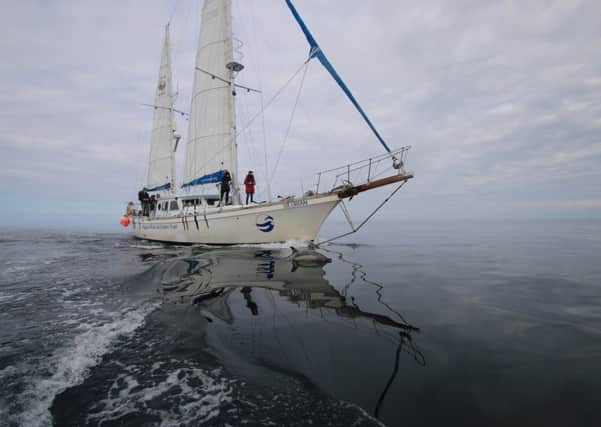Record number of dolphins off west coast


Volunteers and scientists on its specialised research yacht Silurian, recorded 2303 individual common dolphins, 42 bottlenose dolphins and 94 Risso’s dolphins – the highest ever recorded in its annual survey seasons.
Dr. Lauren Hartny-Mills, science officer, said: “The reasons for the high number of sightings of these charismatic dolphin species – and the broader effects on the marine environment and other species – remain unclear.
Advertisement
Hide AdAdvertisement
Hide Ad‘‘But the intriguing findings highlight the importance of on-going monitoring and research – to strengthen our understanding of what is taking place in Hebridean waters, and to ensure well-informed conservation action.”
The latest findings were made in a research season lasting from May to October, as part of the trust’s long-term project monitoring whales, dolphins and porpoises, as well as basking sharks in the Hebrides.
The Isle of Mull-based organisation now holds data from more than 95,000km of survey effort. It aims to pass the 100,000km milestone during 2017, and it is currently recruiting volunteers to work as citizen scientists onboard Silurian for periods of almost two weeks from April to September.
Alison Lomax, director of Hebridean Whale and Dolphin Trust, said: “The impressive range of species documented in our at-sea surveys is a powerful reminder that Scotland’s west coast ocean environment is home to remarkable marine life. Long-term scientific studies of this globally-important habitat and its inhabitants are crucial if we are to ensure a secure future for the Hebrides’ spectacular cetaceans.”
Advertisement
Hide AdAdvertisement
Hide AdDuring 2016, Silurian – previously used in filming of the BBC’s The Blue Planet series – covered more than 5,000 nautical miles, compared to an average of almost 4,000 miles annually over the previous 14 years.
Its crew documented more than 1,300 cetaceans and basking sharks, and recorded almost 700 hours of underwater detections of cetaceans using specialist listening equipment.
Notable highlights included a wonderful encounter with a humpback whale in the northern Minch – an hour was spent with the massive creature lunge feeding, tail slapping and swimming under Silurian, alongside a large group of common dolphins.
Last year also saw the trust’s first expeditions running out of Ullapool, allowing for surveys in the more northern and western parts of the charity’s study area.
Advertisement
Hide AdAdvertisement
Hide AdWith a long, complex coastline, strong ocean currents and a variety of habitats, the Hebrides is one of the UK’s most biologically productive areas. So far 24 of the world’s estimated 92 cetacean species have been recorded in the region.
To take part contact [email protected], call 01688 302620, or visit www.hwdt.org.